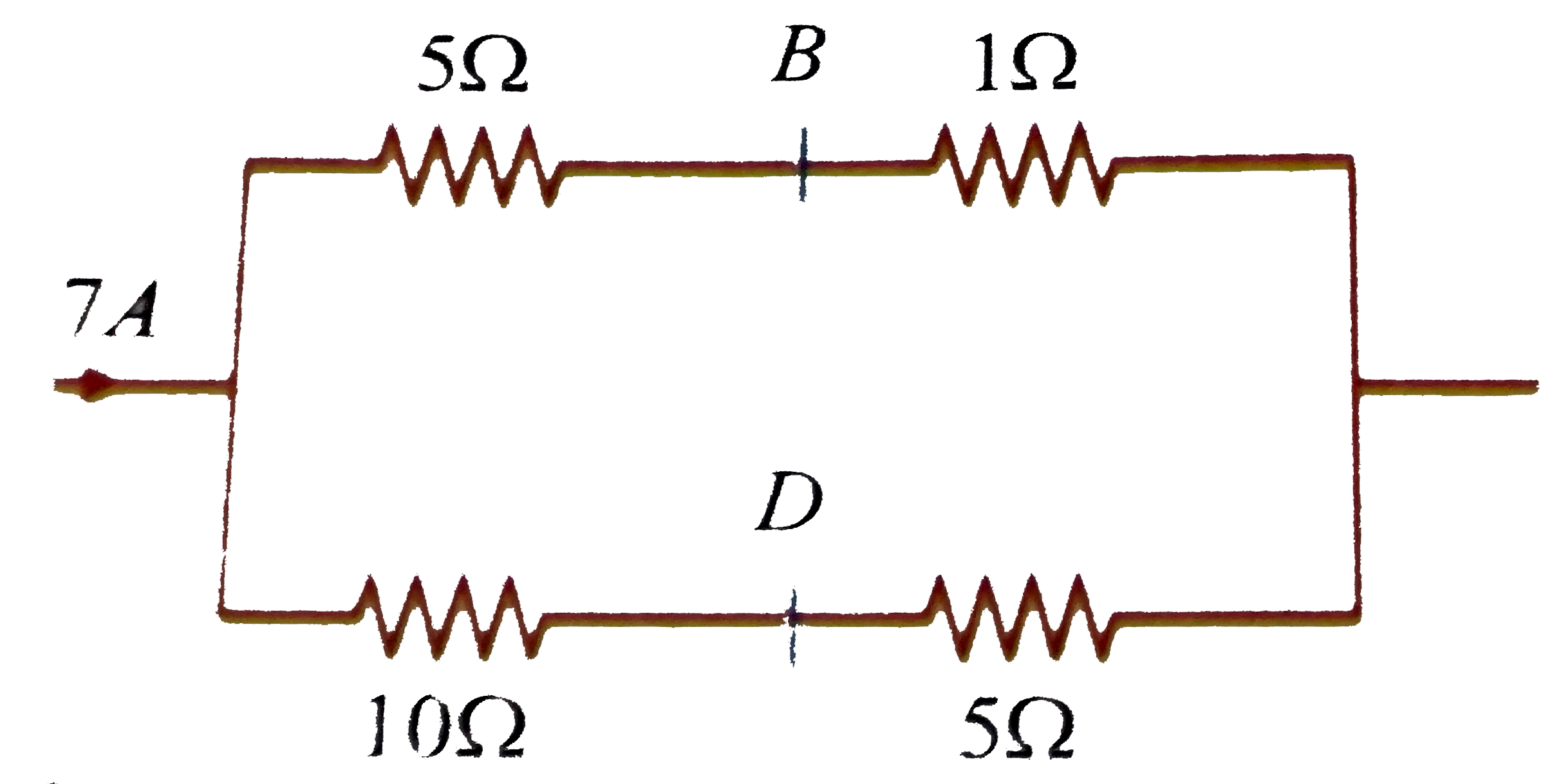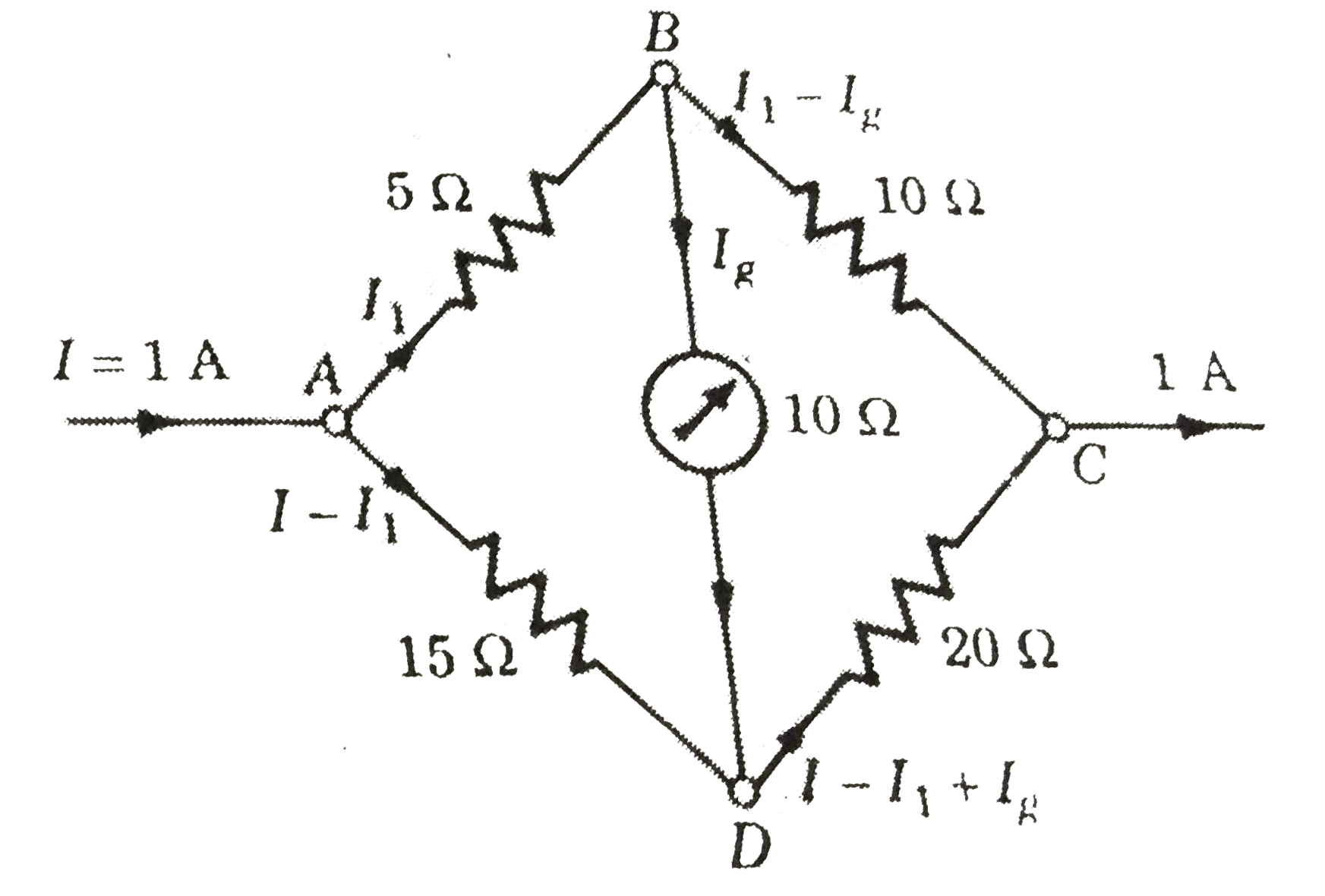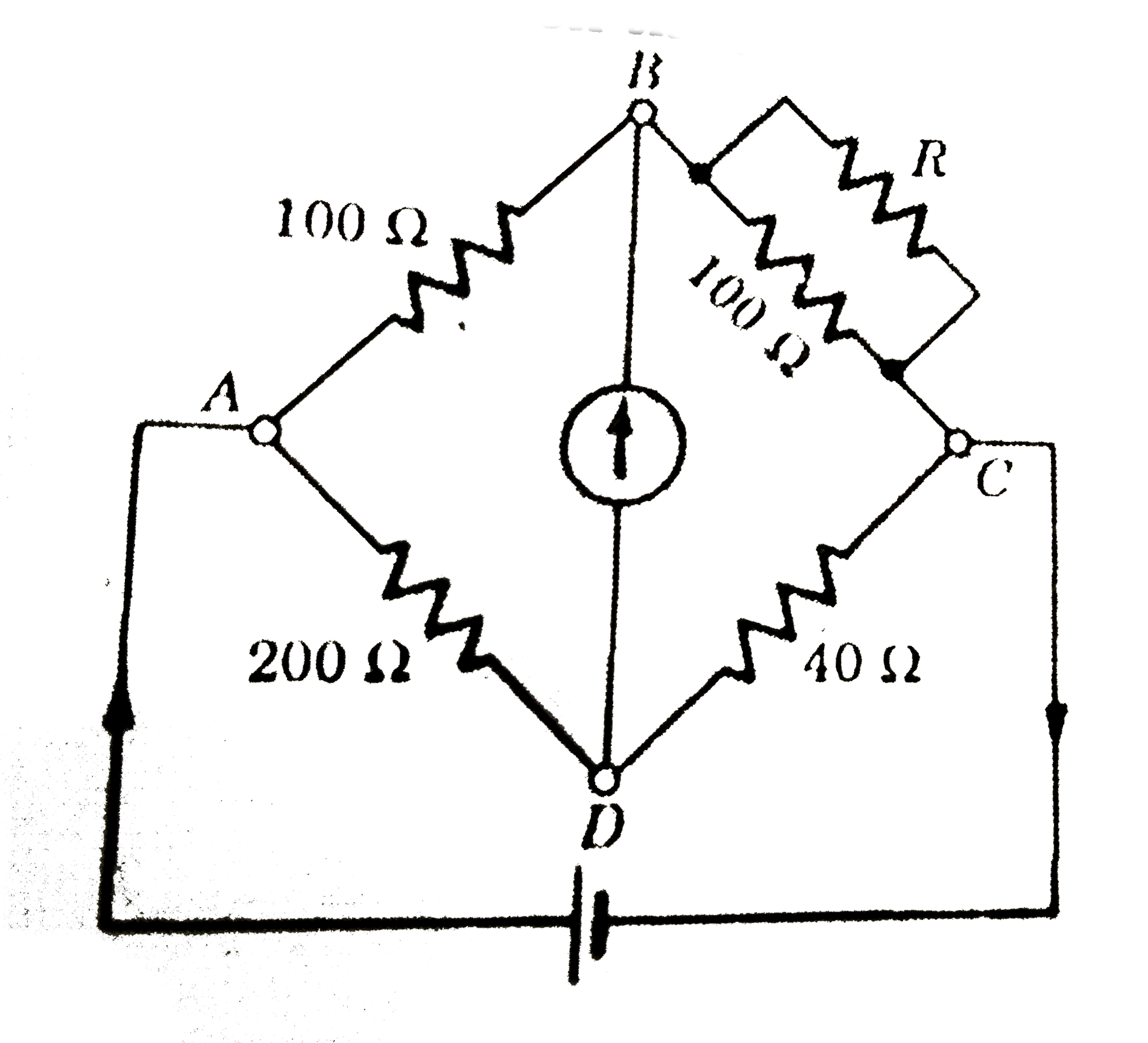Assertion (A): In balanced condition of a Wheatstone bridge, there is no current flow through the galvanometer.

Reason (R ): The potential of point B and D are same.
A
Both A and R are true and R is the correct explanation of A
B
Both A and R are true but R is NOT the correct explanation of A
C
A is true but R is false
D
A is false and R is true
Video Solution
Text Solution
The correct Answer is:A
In balanced condition of a Wheatstone bridge, there is no current flow through the galvanometer. This is also called null condition. So, the assertion is true.
When the potential of point B and D are same then only there is no current flow through the galvanometer. Hence the reason is also true and explains the assertion.
|
Similar Questions
Knowledge Check
Assertion (A): In balanced condition of a wheat stone bridge the potential difference is maximum.
Reason (R): When the sum of resistance is equal to the voltage supplied, the condition is said to be balanced.ABoth (A) and (R) are true and (R) is the correct explanation of (A).BBoth (A) and (R) are true but (R) is not the correct explanation of (A).C(A) is true but (R) is false.D(A) is false and (R) is also false.If in the experiment of Wheatstone's bridge, the positions of cells and galvanometer are interchanged, then balance point will
AChangeBRemain unchanedCDepend on the internal resistance of cell and resistance of galvanometerDNone of these
A current of 7 A flows through the circuit as shown in the figure the potential difference across points B and D isA5VB3VC10VD7V
Determine the current flowing through the galvanometer G of the Wheatstone bridge shown in figure.
 .
.
View SolutionUse Kirchhoff's rules to obtain the balance condition in a Wheatstone bridge.
View SolutionIn a wheatstone bridge the four arms have each resistance of 50 ohm.The galvanometer current is "
View Solution
The wheatstone's bridge of figure. Is showing no deflection in the galvanometer joined between the points B and D. compute the value of R.
View SolutionThe given Wheatstone bridge is showing no deflection in the galvanometer joined between the points B and D in fig

View Solution
